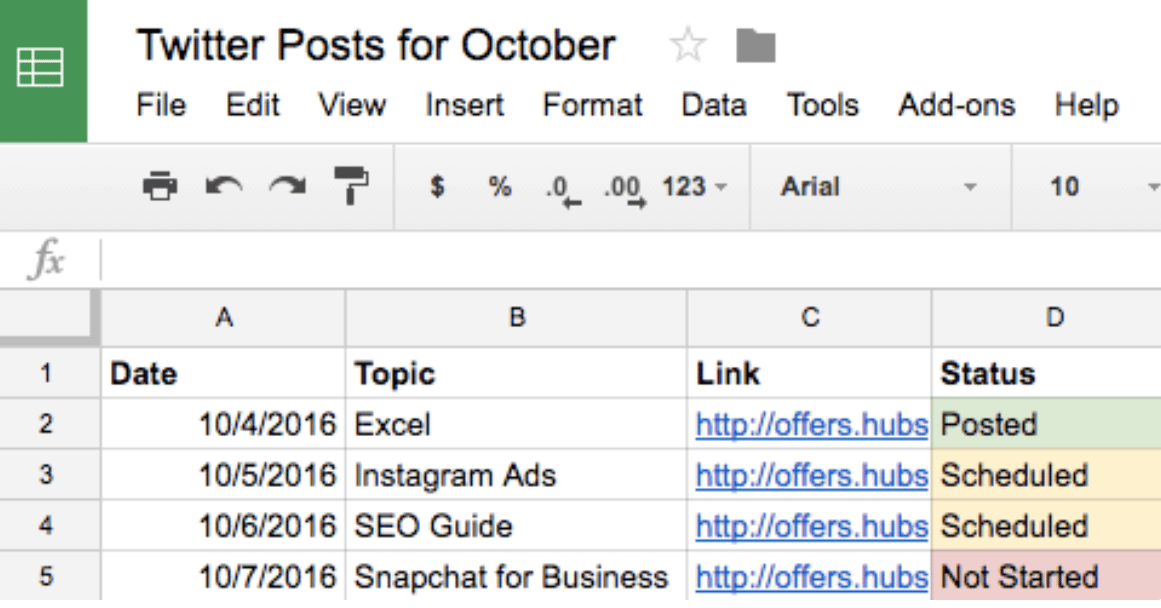Join below for the greatest social media newsletter ever. Ever Ever.👇
Thank you! Your submission has been received!
Oops! Something went wrong while submitting the form.
X

You may already know that the optimal number of social media posts a day is one to two pieces of content. This might seem feasible until you start to do some math. Two posts a day translates to fourteen posts a week and about 728 posts a year.Are you starting to feel overwhelmed?These posts shouldn’t be just content for the sake of content, or else you hurt your brand and won’t see engagement. Instead, each piece should be unique and offer value that will generate engagement like shares and comments.While you can’t guarantee each piece you create and publish will be a hit, you can take some steps to increase the quality of your content and generate new ideas that will perform well.Learn how to develop a social media content plan from the ground up so that you won’t be scrambling for ideas three weeks into a new year with hundreds of posts still to go.
How do you translate your business goals into social media content goals that align with your brand while customized for each platform?
Social media audiences behave differently than other marketing audiences, so you must establish unique benchmarks. Because of these unique aspects of social media, you also need to set new goals specific to your social media channels.The two most common social media goals are increasing brand awareness and engagement. Some ways to measure these two goals include:
As you develop goals, make each goal measurable by setting a benchmark you strive to reach. By setting standards, you know whether your social media campaigns are successful and provide a return more significant than your investment or whether you need to adjust your social media campaign strategy.
In addition to your overarching goals, each piece of content should serve a specific purpose aligned with your goals.For example, awareness pieces are content people will share and interact with to get your name in front of the maximum number of people. On the other hand, conversion content focuses on the following you already have and telling them why they need your product or services.Here are some specific content goals to include in your media plan strategy:

Image from Startup Bonsai
Branding your social media content aligns it with your company and its goals. For example, if you go on the ULTA Beauty Instagram page, you will see the same orange and pink color pallet as their website and other social media channels. Because of this consistency, visitors who see their content know who they are even before seeing their name and are more likely to connect the brand’s content.Before creating content, decide on a unique color pallet, font, and style to connect your brand to your content. These design elements should be in every piece of content you create.------------------------------------------------------------------------------------------------------------------------------------------
Explore social media content creation with these additional topics:
------------------------------------------------------------------------------------------------------------------------------------------
Coming up with unique and engaging content for your social media campaign plan isn’t as complicated as you may think. Here are five methods for brainstorming new ideas and repurposing old ones so you always have something fresh to share with your followers.

Instead of coming up with ideas that might not be relevant to your customers, you should be using content ideas your customers want to see.While you don’t have a mindreading machine, you have something even more efficient: search engines.When you perform a Google search, you will see a section titled “People also ask.” Then, further down, you see another section titled “Related searches.” These two sections have lists of actual search queries from your customers.In addition, as you type in a search query on social media, you will see a list drop down of related queries that consumers most often search. You can also look at popular hashtags to find popular questions and topics.Keyword research tools can identify what phrases customers often use. It provides more ideas than just looking at common searches. You can use one word in the industry to pull hundreds of additional ideas, including synonyms and related keywords.Use these strategies to build a list of common search inquiries to inspire your content. For example, if you are a fashion brand, a Google search on fashion shows the question, “What fashion is most popular?” That question can inspire a video on social media showing the most popular looks and showcasing your products.
Social media always has dozens of trends circulating. Viral trends aren’t just for consumers. They are also a unique opportunity for brands to humanize themselves and produce fun content to increase engagement.A current trend that several brands are jumping on is TikTok’s viral “Drop Challenge.” One example is Breakfast Television which aired its version of this TikTok trend. Within 24 hours, they saw over 100,000 views on their TikTok.
Instead of guessing what content performs well, you can look at successful social media campaigns in your industry to see what type of content and formats see the best results. While you don’t want to copy their content, you can use their accounts as inspiration when you hit a wall during your brainstorming sessions.
One of the easiest ways to develop new ideas is to ask your audience what they want to see. People love to be involved with businesses and feel part of the brands they love. If you don’t want to ask outright, consider joining groups and conversations in your industry to see what customers are saying to each other.
Your social media should be social-first, which means your content shouldn’t just be repurposed content from other marketing channels. However, that doesn’t mean you have to throw out all your good ideas.The research you performed and the content you created can serve as inspiration for what you create on social media. You can also repurpose content between your social channels while also keeping in mind each social media platform’s unique features that will make those accounts differ.A good practice is repurposing content from older posts, especially your best social media campaigns from the past. For instance, if you had a post last year about the best ways to use your product in 2021, you can repurpose that topic for 2022.
Once you have a list of content ideas with a specific purpose, you can put it all together and start plugging them into your social media calendar. Your social media calendar outlines what you will post and when. This calendar will make project assignments easier and keep everyone on the same page to ensure you are posting content regularly.Here are guidelines on how often to post content on each platform:
While you can use a spreadsheet for your calendar, social media platforms offer more user-friendly options that let you track your calendar across platforms, see the performance of individual posts, and schedule their publication all within one dashboard.

Image from HubSpot
The last step before you begin creating content is assembling your team of content creators to ensure you can produce regular and quality content.
On average, sales teams don’t use 65% of marketing content because it doesn’t match their goals. This misalignment wastes resources and time when both teams could have worked together to create content that nurtures and converts followers.Marketing and sales alignment is essential for social media success because your audience is from every point along the sales journey. Unifying both departments bring together data from each touchpoint to help you produce content that engages and converts.Consider hiring a marketing agency that understands social media and has hands-on experience using it to help you create strategies that keep you ahead of the game.
Your content creators are involved in creating your videos, images, audio, and written media. These may be outsourced or in-house creators. In addition to creators, you will need talent for your videos or images. These may be people within your company who represent the brand or outside actors who have more experience working with social media.Social media influencers are valuable team members to use as they often have their own production team and can create content for their accounts that you can share on yours. In addition, 49% of consumers rely on influencer recommendations when making purchases.
Not all your content creators are paid. Some will be organic contributors that participate because of their brand loyalty, interest in exposure, or connection to your brand.You can encourage audience contributions by making it a game or reaching out to current brand advocates. Your employees will be some of your most loyal brand advocates.One example of a brand using user-generated content is Yahoo News on TikTok. They created a promotional video that included clips from users discussing news topics. This promotion generated interest among the younger crowd to get involved in politics and keep up to date on the latest news through Yahoo.
Do you want a social media agency that does it all, from data insights and concept to production, distribution, and analysis?Kubbco is your solution for content creation. We have the tools and hands-on experience to plan and create content that increases your engagement and leads to greater returns.Contact us and get started with your social media content plan.

As an Associate Strategy Director I am responsible for leading the development and execution of organic and paid social media and content strategies for our clients at Kubbco.
These might interest you...